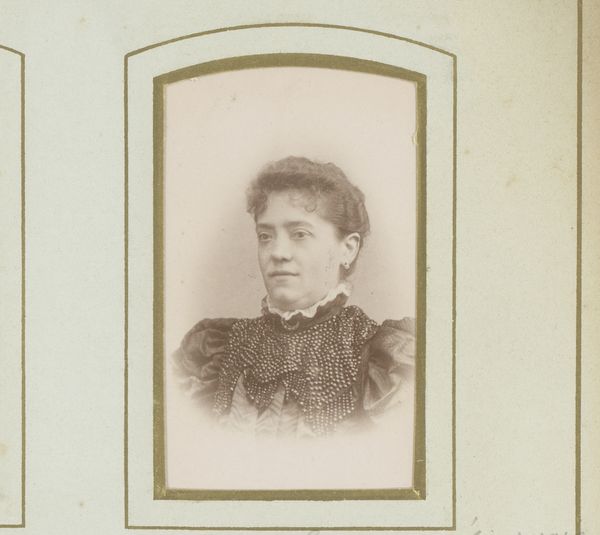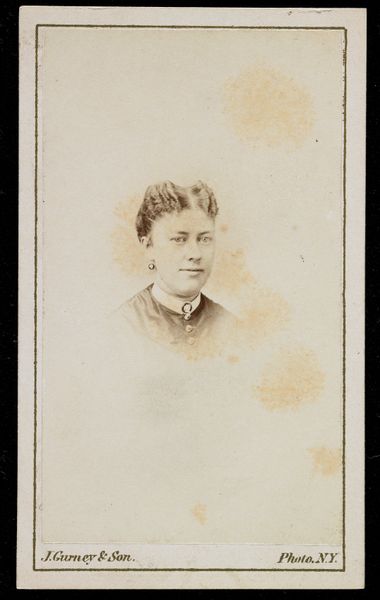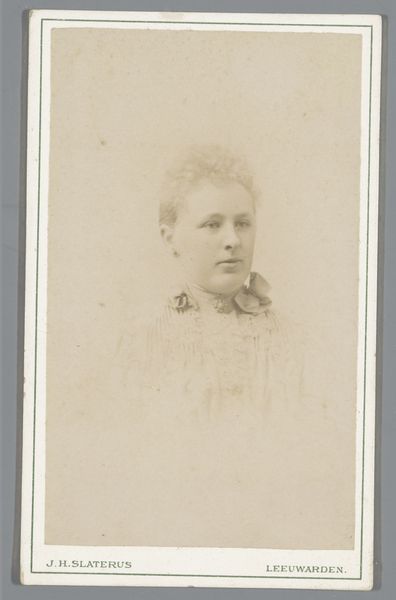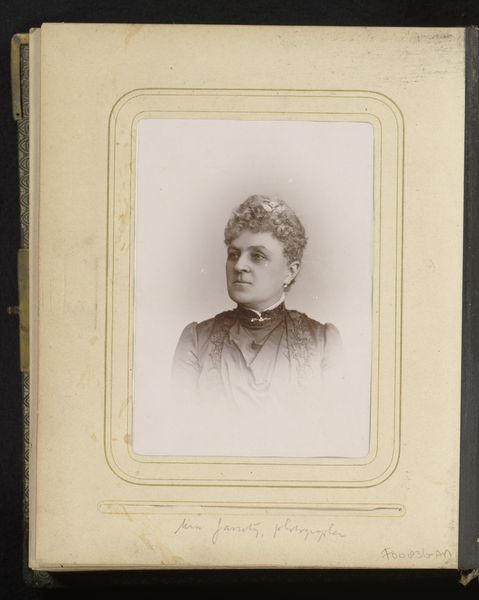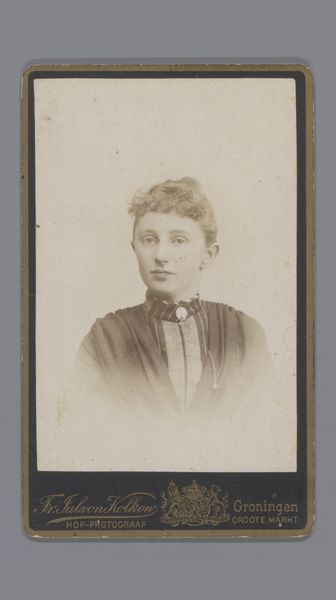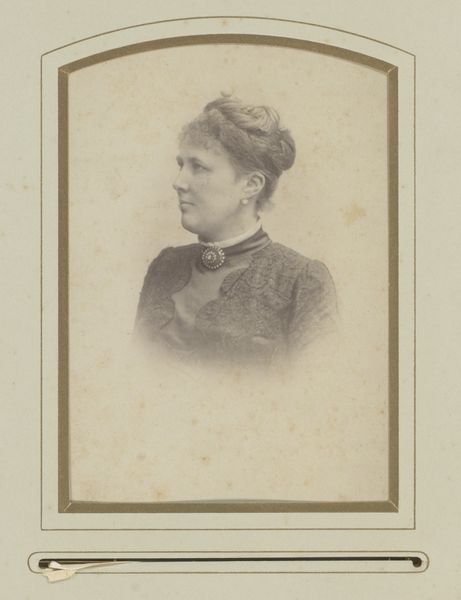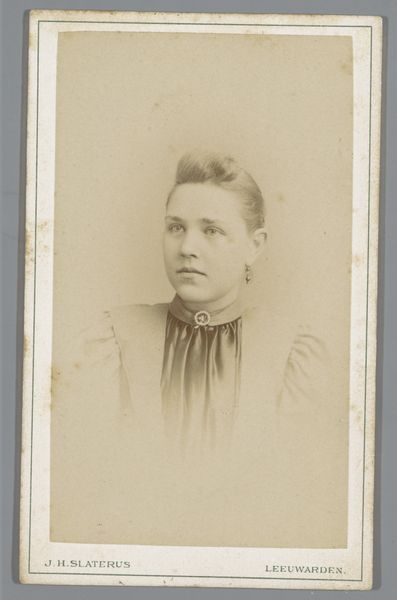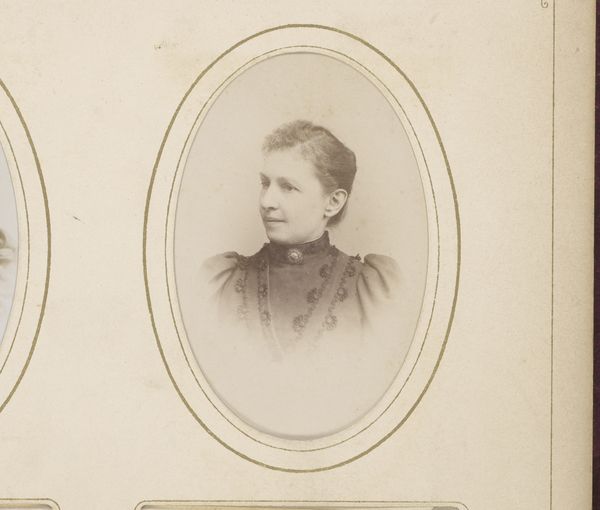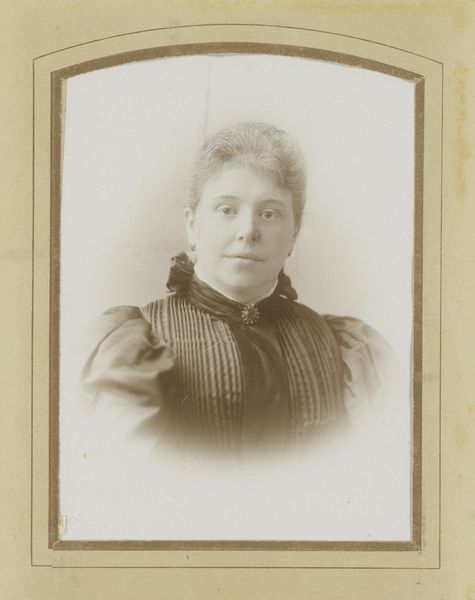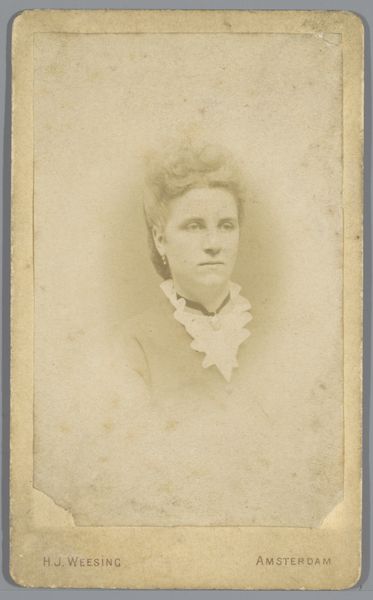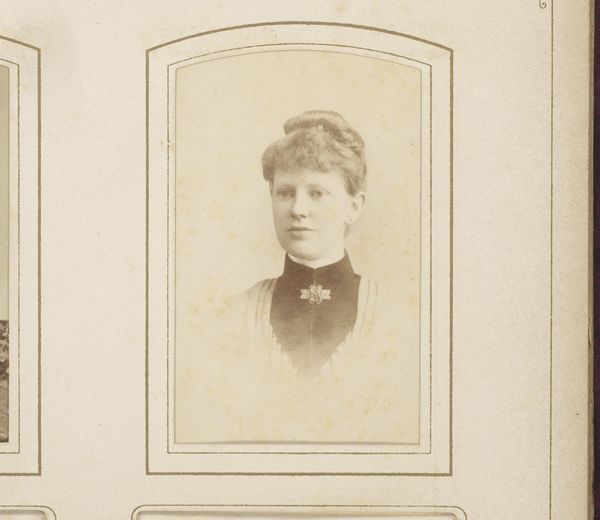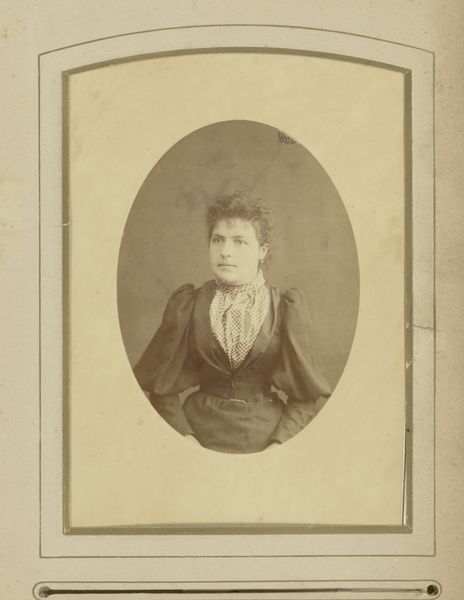
photography, gelatin-silver-print
#
portrait
#
pictorialism
#
photography
#
historical fashion
#
gelatin-silver-print
Dimensions: height 103 mm, width 65 mm
Copyright: Rijks Museum: Open Domain
Curator: This is a captivating piece titled "Portret van een onbekende vrouw" – "Portrait of an Unknown Woman." The gelatin silver print was crafted sometime between 1885 and 1900 by J. Van Crewel Jeune. Editor: It's striking how the soft focus and sepia tones lend it a dreamlike, almost ethereal quality. There is an immense weight of untold history just radiating from this woman’s steady gaze. Curator: Pictorialism sought to elevate photography to the realm of fine art, much like painting or sculpture, and in so doing embraced alternative processes that obscured the indexical function of the photograph. These printing techniques were about a manipulation of material towards more aesthetic ends. The photographic materials became just as valuable, or more so, than the represented subject matter. Editor: Exactly! And the subject's dark attire, juxtaposed against the blurred background, amplifies this sense of mystery, calling to mind images of high-society portraits meant to convey nobility through a symbolic language of status, which now speaks more of a deep and unretrievable past. Her pose—her dress!—it speaks of turn-of-the-century ideals. Curator: It's interesting to consider the socioeconomic implications of studio portraiture during that era. The availability and relative cost of photography shaped who had access to such services, effectively shaping the image’s role in class and representation, right? Editor: Definitely. There’s also something to be said about this portrait in relation to collective memory and symbolism. Her unknowable narrative becomes a mirror, reflecting anxieties, beliefs, and hopes associated with femininity across time, all the while being very anchored in her era by that fashion. Curator: Considering the social and economic factors at play during this period helps one contextualize the print as an accessible way for those in the middle classes to have their family recognized as legitimate members of a modern, increasingly democratic, civil society. Editor: This photo's symbols still resonate strongly today! Thinking about it more, it’s really intriguing to consider her unknown narrative. Thank you for elaborating on how accessible it would have been to her, at the time. Curator: The interplay between material and maker and socioeconomic setting provides another lens for interpretation, don't you think? Editor: Absolutely. And how rewarding to uncover just some of the ways such a seemingly simple image speaks volumes across decades!
Comments
No comments
Be the first to comment and join the conversation on the ultimate creative platform.
